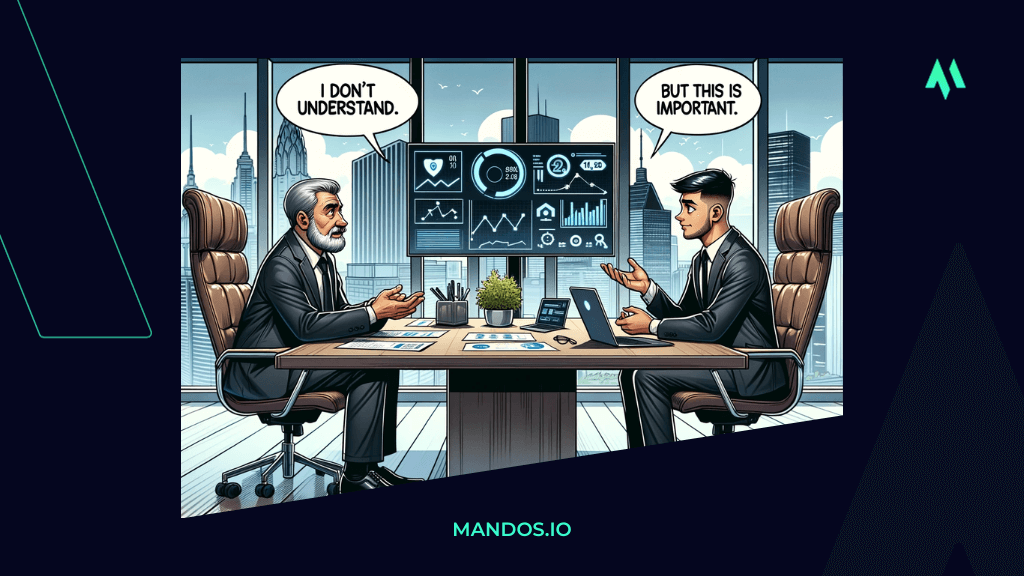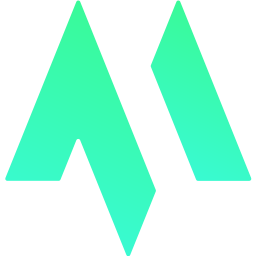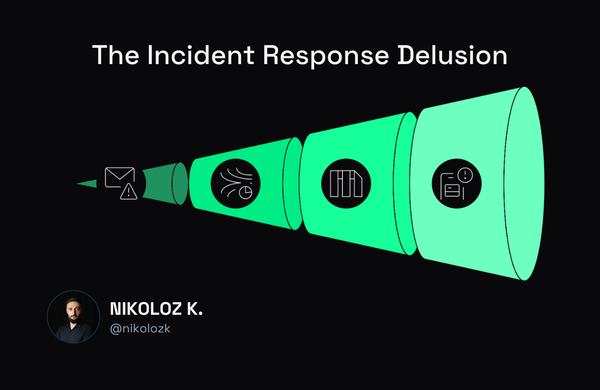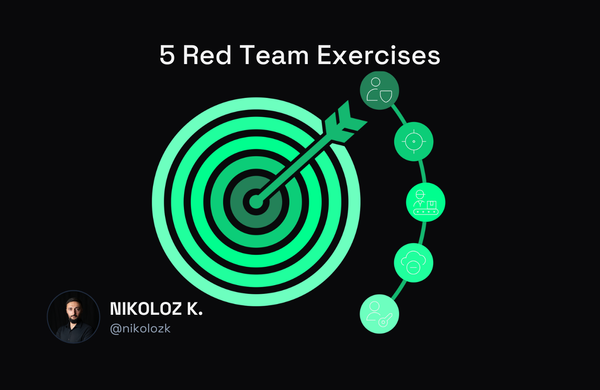Introduction to Security-Driven Growth

Nikoloz Kokhreidze
Transform your organization with a Security-Driven Growth. Learn why CISOs and tech leaders need to turn cybersecurity from a cost center to a growth catalyst.

Picture this: Company A spends minimally on cybersecurity, viewing it as a cost they'd rather not have. On the other hand, Company B invests intelligently in information security measures. Over time, Company A faces multiple data breaches, losing customer trust, company valuation and millions in revenue. Company B? They not only improve their security posture but also use it as a selling point, attracting more business and growing exponentially.
Which company would you rather be?
From Cost Center to Growth Catalyst
According to MITSloan Management Review, executives who have successfully navigated through cyberattacks now see cybersecurity as a top-level strategic priority. The biggest mistake? Treating cybersecurity as an operational issue. This mindset shift is crucial for organizational resilience and leveraging cybersecurity as an opportunity rather than an expense. So, what's the next logical step after recognizing the strategic value of cybersecurity?

Welcome to the transformative power of Security-Driven Growth - it's about turning security into a competitive advantage. If you're a VC, tech leader or CISO aiming for long-term success, understanding and implementing Security-Driven Growth strategies will become #1 on your priority list.
Gone are the days when cybersecurity was merely a defensive measure. Today, it's a cornerstone for innovation, resilience and scalability. Smart security practices don't just mitigate risks but they unlock new avenues for business growth and customer trust. So, let's break down what Security-Driven Growth really means and why it should be integral to your business strategy.
Remember Company A and Company B from our introduction? They both started with the same goal—grow and be profitable. But while Company A's growth stalled due to their narrow view of security as a cost center, Company B thrived. Why? Because they saw an opportunity where others saw a burden.
So, what does this shift look like in real-world scenarios?
Today every company, regardless of its primary industry, operates with a tech backbone and effectively is a Tech Company. Those that fail to recognize this reality are on a fast track to obsolescence.
Let's look at Apple and Clorox. Before diving deeper, it's crucial to clarify: the goal isn't to compare Apple and Clorox as companies, but to spotlight different approaches to cybersecurity and their outcomes. Think of them as real-world representations of Company A and Company B. The industry is irrelevant; what matters is how each company views cybersecurity—as a burden or an asset.
Although primarily known for its cleaning products, Clorox suffered a cyberattack disrupting its operations, affecting its ability to produce cleaning materials. This breach was linked to a notorious group of cyber criminals also responsible for major casino hacks. The result? Devastating supply chain and business consequences:
- Anticipated net sales down 23-28% from the previous year.
- Expected organic growth slashed from mid-single digits to a depressing 21-26% dip.
- Adjusted EPS anticipated to range from a loss of $0.40 to $0.00.
Now, let's look at Apple. A tech giant that's more than just iPhones and MacBooks, Apple has woven security into its brand DNA. From the get-go, Apple emphasized end-to-end encryption and secure data storage. They turned their commitment to security into a major selling point. Security is front and center in their marketing campaigns. This approach pays off. Consumer trust skyrockets, and competitors struggle to catch up.
By turning security into a brand promise, Apple gains a serious competitive edge:
- They leverage their security strengths to attract a loyal customer base that values privacy.
- Customers are more willing to entrust their financial transactions, health records and private conversation.
- Apple uses entrusted aggregated data to develop new products and services, resulting in profit growth and larger market share.
So, back to Company A and Company B. If Company A follows the path of Clorox, they're setting themselves up for operational chaos and financial loss. On the flip side, by following the example of Apple, Company B not only strengthens its posture but also gains a competitive edge.
Let's break down the components of Security-Driven Growth.
What is Security-Driven Growth?
Companies aiming for a sustainable competitive advantage should integrate their cybersecurity resources strategically. This involves leveraging other company-specific complementary resources like culture, organizational leadership, or learning capabilities. Traditional strategy theory and the Resource-Based View (RBV) of strategy both affirm that cybersecurity can neutralize threats and exploit opportunities, making it a key component of a company's overall business strategy for growth and sustainability.
Security-Driven Growth is a business model, that transforms the role of information security from a mere safeguard to a growth catalyst. Unlike traditional approaches that treat security as a cost center or a compliance necessity, this model integrates security into the core business strategy.
In a Security-Driven Growth model, security is not an afterthought or a separate department that occasionally advises the business. It's a core part of the executive team, integrated in the DNA of business strategy. Whether it's entering a new market, launching a product, or forming partnerships, security plays a role in the decision-making process.
For this model to be effective, it requires buy-in from the top echelons of the company. The CISOs need to be involved in strategic conversations traditionally reserved for CEOs, COOs, and CFOs. And for CISOs to be involved, they must move away from being technical advisors to becoming business owners and effective communicators within and outside of their teams.
Benefits of Security-Driven Growth
Executives often treat cybersecurity as an operational issue for several reasons. They mischaracterize threats as random events, keep cyberattacks confidential, and assign strategic priorities based on their own expertise. This underinvestment in cybersecurity can be costly. A comprehensive cybersecurity strategy can uncover weaknesses and opportunities, changing the focus from protecting IT infrastructure to protecting key business processes. So, how do we pivot from this traditional, limited view to something more expansive and beneficial?
Turning your security function into a growth catalyst doesn't mean abandoning its fundamental role. Instead, it amplifies it. When implemented thoughtfully, the complexities can become opportunities for innovation. The ROI, although hard to quantify in the short term, pays dividends through brand trust and customer loyalty. Regulatory compliance, instead of becoming a hurdle, can turn into a competitive advantage. Ethical concerns? Addressed through transparency, which itself can be a unique selling point.
Now let's talk about tangible benefits of shifting to the Security-Driven Growth model.
Revenue Generation
- Differentiation: In a saturated market, solid information security program can be your unique selling point. Use this to attract customers who won't compromise on security. Trusted security also attracts new generation of investors who want to invest in companies that value security and have a modern tech stack.
- Customer Confidence: A secure platform boosts transaction volumes. Why? Because customers are more willing to share data with a provider they trust.
- Reduced Liability Costs: Solid security measures can lower the risk of costly data breaches, thereby preserving your revenue.
Let's say you're an e-commerce platform. Instead of just marketing the variety of products you offer, you also highlight your secure payment gateway as a major USP. You invest in top-tier encryption and fraud prevention measures, then actively communicate this to your customers. This boosts customer trust and becomes a key factor that differentiates you from competitors, thus driving sales.
Customer Retention
- Transparency Reports: Don't just publish these; actively communicate how you're protecting customer data and resolving any security incidents.
- Immediate Security Alerts: Keep customers in the loop about suspicious activities on their accounts. This builds trust.
- Reduced Churn: A single security incident can cause significant customer loss. Strong security measures can prevent this, helping you keep your customer base intact.
A SaaS company doesn't just track usual KPIs like Monthly Recurring Revenue (MRR) or Customer Acquisition Cost (CAC). They also include security metrics like the number of successfully repelled attacks or system uptime. When a company is open about its security metrics, it's powerful. But the real game-changer is transparency during a security incident. By openly communicating the actions taken to resolve an issue, the company demonstrates accountability and builds trust. This level of openness reassures existing customers and attracts new ones who value such transparency.
Market Expansion
- New Markets: High-security standards can be your entry ticket to markets with strict regulations.
- Strategic Alliances: Robust security can attract partnerships, enhancing your product or service through combined offerings.
- Government Contracts: Meeting high-security protocols can make you a contender for lucrative, long-term government contracts.
Imagine you're a healthcare provider storing sensitive patient data. You invest in advanced data encryption and secure access controls. But you don't stop there. You use this as a pitch to form partnerships with larger healthcare networks, who are assured by your high-security standards, and thus, are more willing to collaborate. Here, your security measures have directly contributed to business expansion.
Not One-Size-Fits-All
While the Security-Driven Growth model has transformative potential, it might not be universally applicable. For example:
- Commodity Businesses: Companies selling undifferentiated products like raw materials may find limited utility in this model. Security won't necessarily give them a competitive edge. However, consider this: enhancing security could reduce theft, fraud, and operational disruptions. This can indirectly lower costs and raise profitability. So, even if security doesn't drive growth, it can protect margins.
- Highly Regulated Industries: In sectors like healthcare, where compliance is king, the model may be constrained. The focus often is on meeting legal requirements rather than leveraging security for growth. But in an industry like healthcare, for example, robust security could protect against data breaches that otherwise would tarnish a brand's reputation and customer trust.
- Small Brick-and-Mortar Stores: These may not have the tech infrastructure that would benefit significantly from Security-Driven Growth strategies. On the other hand, secure transactions can still offer peace of mind, driving repeat business. Plus, as they grow, they'll need a strong security foundation to transition to e-commerce or other digital extensions.
- Non-Profit Organizations: Their goals aren't traditionally aligned with business growth, making the model less relevant. The focus here isn't on growth, but let's not forget that these organizations still handle sensitive information. Robust security can enhance donor trust, potentially increasing donations and outreach impact.
On the flip side, numerous sectors can benefit from adopting this approach:
- Fintech: Companies like Stripe have built their reputation on robust security measures, attracting more business.
- E-commerce: Amazon gains a lot of trust and therefore, customer loyalty, through secure transactions.
- Cloud Service Providers: Services like Microsoft Azure turn security into a selling point, attracting more enterprise clients.
- Healthtech: Despite being a regulated sector, innovative firms can leverage enhanced security features to stand out.
- Automotive Industry: Think of Tesla. Their focus on cybersecurity protects not only data but also physical safety in their autonomous vehicles. This level of assurance can be a major selling point for consumers.
- IoT Manufacturers: Companies like Nest build devices that collect a lot of user data. Robust security measures can make or break consumer trust in these "smart" devices.
- Telecommunications: Companies like Verizon not only provide network services but also handle massive amounts of data. Secure data handling can be a selling point for both individual and enterprise customers.
- Energy Sector: Companies like GridX use secure smart grids to assure customers that their energy supply isn't just reliable but also safe from cyber threats.
- Gaming Industry: Companies like Valve Corporation need to invest heavily in security to protect user accounts and purchases. This establishes trust and ensures long-term engagement.
- Travel & Hospitality: Booking platforms like Airbnb have to prioritize security to protect both hosts and guests. A secure platform ensures repeat bookings and a sustainable growth path.
- Digital Media: Streaming services like Netflix need robust security to protect copyrighted content and user data, making it a go-to platform for users who value privacy.
- Food Tech: Food delivery services like DoorDash handle a lot of sensitive customer data, from payment info to location. Security features can differentiate them in a crowded marketplace.
The list is endless.
The takeaway here is simple. If you're in an industry where security can be a differentiator, don't just include it; feature it. Make it a cornerstone of your growth strategy, and you're likely to see the benefits not just in reduced risks but in increased market share and customer trust.
Conclusion
Organizational resilience requires four strategic capabilities: protecting the business, broadening awareness, managing consequences, and responding and recovering. These should be part of strategic planning. The most common mistake is to focus only on protection, neglecting other aspects like awareness and response.
Security-Driven Growth is a multifaceted strategy that can significantly impact your bottom line, customer loyalty, and market reach. It shifts the narrative from viewing security as a mere cost center to recognizing it as a catalyst for growth, innovation, and trust. If you're a tech leader, CISO, or CEO aiming for scalable success, now is the time to integrate security into your core business strategy.




